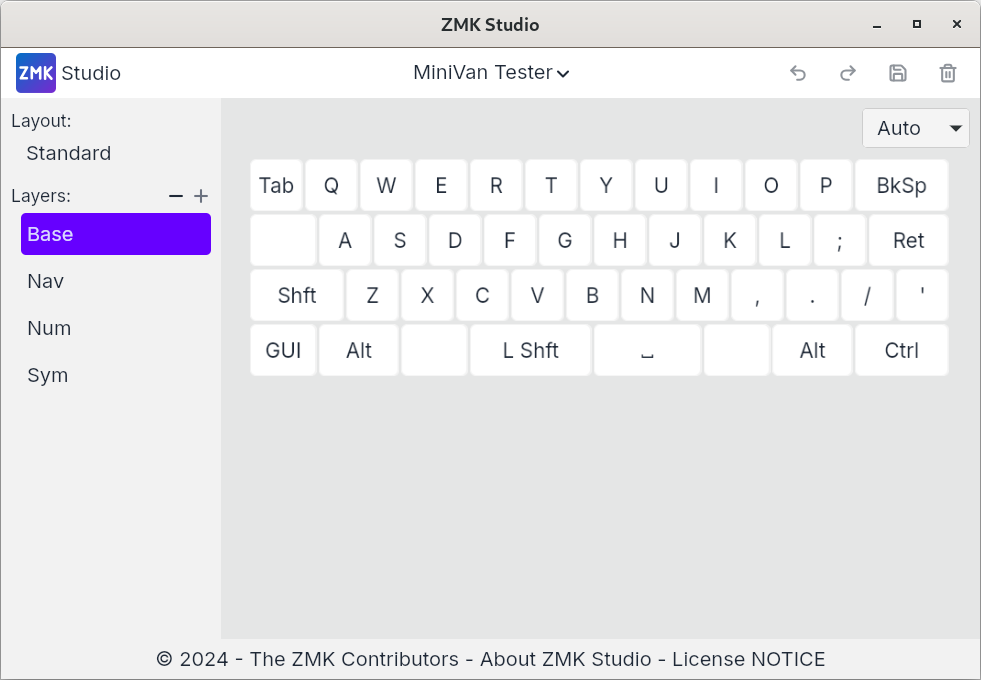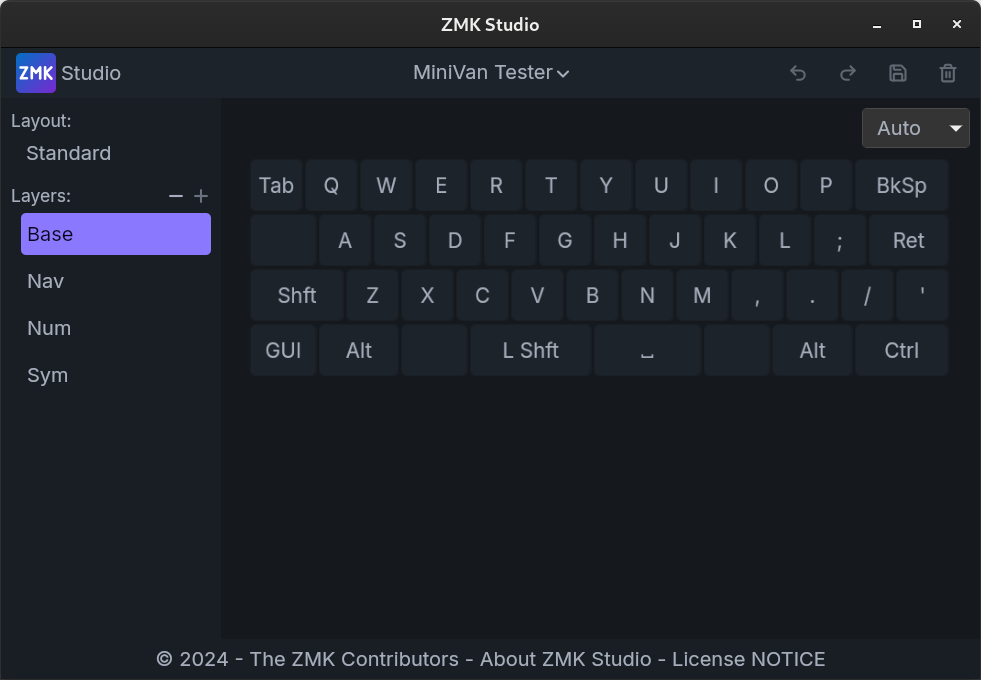Zephyr 4.1 Update
We're happy to announce that after a long wait, ZMK's main branch is now running Zephyr 4.1!
We're happy to announce that after a long wait, ZMK's main branch is now running Zephyr 4.1!
ZMK is preparing for a big breaking change. As such, users should consider pinning their ZMK version. Read on to find out more about our versioning system and how you can pin your ZMK version.
On the 26th of February some of the ZMK contributors got together for a contributor sync. In the interest of transparency, it was decided that meeting notes from the sync would be published on the ZMK webpage.
I'm delighted to announce that after many months of work, the ZMK Studio Minimum Viable Product (MVP) has reached General Availability (GA) status. I'm very excited with the feature set and foundation we've gotten into this first release, and equally excited for the upcoming work to add even more features.
ZMK Studio provides runtime keymap functionality for ZMK powered devices, allowing you to make changes without the need to flash new firmware. It is a combination of major firmware enhancements paired with a new frontend application for interacting with your keyboard.
The app is available for compatible browsers, and as an installable desktop application for Linux, macOS, and Windows.


I'm happy to announce that we have completed the work to upgrade ZMK to Zephyr 3.5!
This blog continues our series of posts where we highlight projects within the ZMK ecosystem that we think are interesting and that the users might benefit from knowing about them.
In this installment, we are highlighting two projects (and a bonus one!) from Joel Spadin, a member of the core ZMK team.
This blog continues our series of posts where we highlight projects within the ZMK ecosystem
that we think are interesting and that the users might benefit from knowing about them. You might
be aware that ZMK configurations in the Devicetree format
use the C preprocessor so that directives like
#define RAISE 2 or #include <behaviors.dtsi> can be used in them. In this installment we are
highlighting the zmk-nodefree-config project
by urob that contains helper methods that utilizes this fact
for users who prefer editing and maintaining their ZMK config directly using the Devicetree
syntax format.
This blog post is the first in a series of posts where we highlight projects within the ZMK ecosystem that we think are cool and that the users might benefit from knowing about them. We are starting the series with a big one, Keymap Editor by Nick Coutsos!
Welcome to the sixth ZMK "State Of The Firmware" (SOTF)!
This update will cover all the major activity since SOTF #5. That was over a year ago (again!), so there are many new exciting features and plenty of improvements to cover!
Today, we merged a significant change to the low level sensor code that is used to support encoders. In particular, this paves the way for completing the work on supporting split peripheral sensors/encoders, and other future sensors like pointing devices.